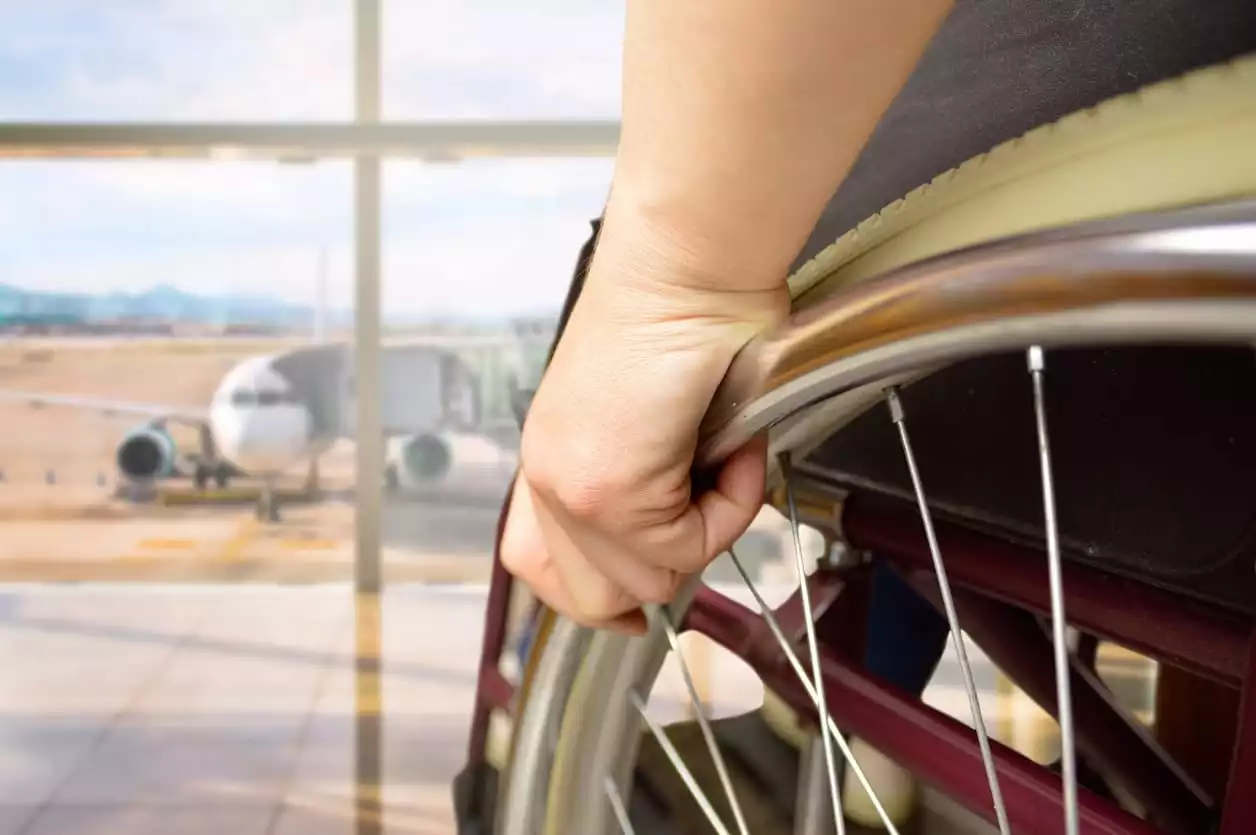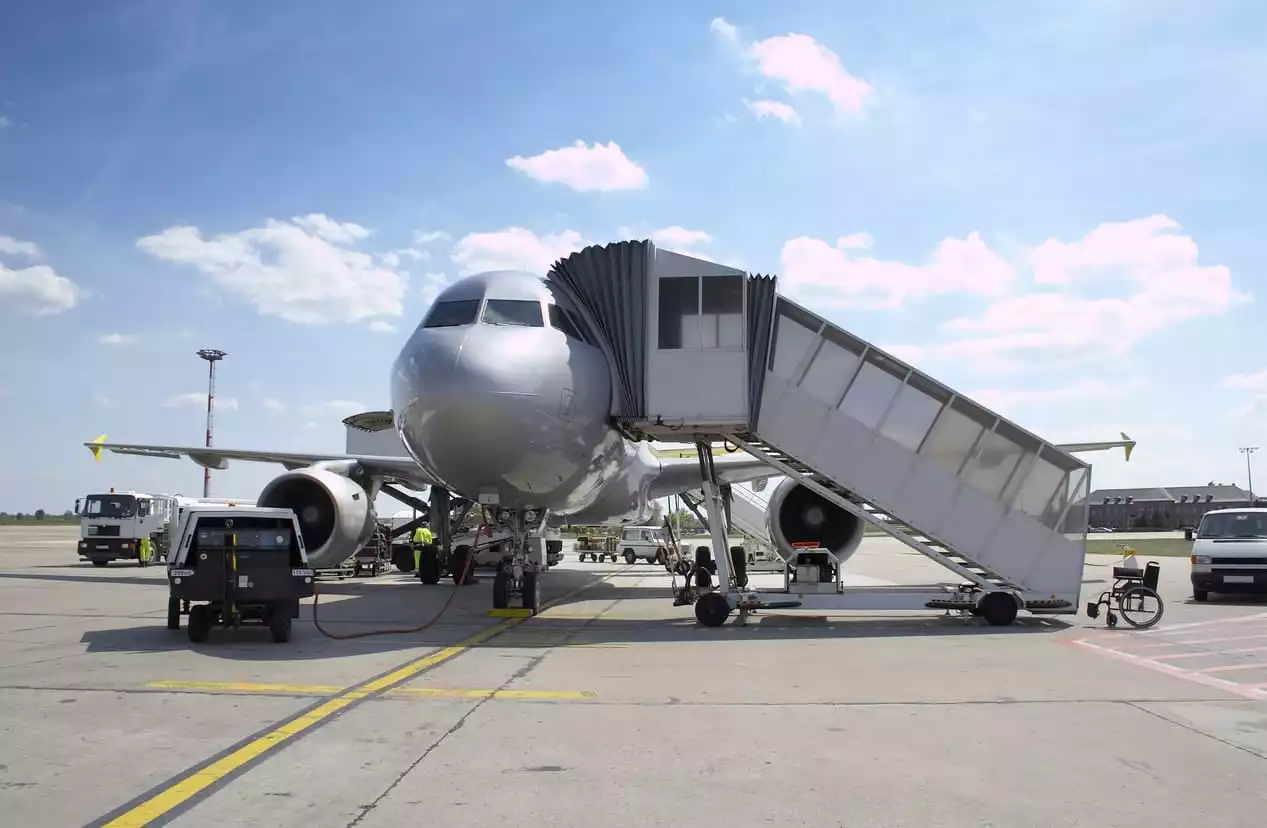
Modern shops, restaurants, and commercial buildings make their buildings accessible for everyone with ramps, railings, elevators, and low curbs. These adjustments limit the number of restrictions present for people using mobility aids on the premises. Airports, however, don’t always carry such clear accommodations; their rules can be confusing and completely different because they have a duty to ensure traveler security. Whether you utilize rollators, walkers, wheelchairs, or canes, air travel with mobility aids can be easier with these tips.
If you are traveling in the next few months, you should know that understanding United States airport policies on mobility aids can be extremely helpful.
Learn more about these guidelines and get involved in this short guide to make air travel with mobility aids easier.
Call Ahead of Time
Most airlines are well-equipped to help you with mobility needs from the moment you arrive at the airport and don’t need you to inform them of your mobility situation.
Airlines have resources on-hand to accommodate patients who rely on walking aids.
That said, it may not always be possible to get the support you need, especially during busy days or on the off chance something goes awry. Even the best airports aren’t perfect; some still seem to occasionally struggle to get accomodations right.
To ameliorate the risk of an issue occurring, you should lay out a plan before you travel with mobility aids.
Call ahead of time, be sure you know the regulations, and don’t be afraid to call and ask for specific supports if you need them.
Sometimes, you’ll need to fill out a particular form when booking flights online. Or, you may need to follow special instructions once at the airport.
Each airline’s website will mark their accessibility options. Most list this information on the passenger info page.
Wheelchairs and Walkers may be Gate Checked
When you travel with mobility aids, it’s best to learn what can be checked.
Some mobility aids are too cumbersome to be used in airplanes. Others cause issues for aircraft instruments.
Most of the time it’s not an issue to use them right up to the aircraft doors, but checking with your airline first is an absolute must.
Each airport has its own procedures when it comes to registering and checking in mobility devices.
Generally speaking, you can carry canes and walkers along with you, but may be asked to allow TSA agents to check them over at security checkpoints.
Walking canes, and potentially walkers, need to go through the scanning belt before you can bring them onto the airplane.
You may be required to temporarily support yourself (or have someone assist you) as you walk through the checkpoint. As soon as you pass through, security agents return your cane or walker.
Wheelchairs, however, are larger, and that’s why checking them in often falls under different regulations.
If you need a wheelchair and aren’t bringing your own, call the airport or airline ahead of time to ensure one is available upon arrival.
Keep an eye out for designated check-in areas for those who need assistance. Smaller airports may lack these specialized zones.
Be aware that staff may place your motorized wheelchair in the plane’s cargo hold up to one hour before boarding begins.
Larger wheelchairs exceeding these dimensions are also typically stored. Rest assured; you won’t be left without supports.
Staff will transfer you to a wheelchair provided by the airport when this happens.
Don’t Be Afraid to Ask for Help At Checkpoints
When you travel with mobility aids, do you find yourself worried about getting through the checkpoint?
TSA agents and airline staff have plenty of experience helping people just like you manage their assistance needs.
Don’t be afraid to reach out for help if you’re struggling – or even if you anticipate you may struggle with processing, embarking, or disembarking with mobility aids.
Many patients with mobility issues fear the checkpoint process because they feel forced to give up their supports.
If you can relate, consider asking for manual pat downs instead.
These are especially useful if you’re unable or unwilling to move without your walking cane, walker, or wheelchair.
Ensure You Have Documents
When embarking on air travel with mobility aids, make sure your airport documents of all your mobility needs.
Get them to print a copy of the records on paper, or print them out at home if you can.
Keep these documents on hand in case you run into issues or someone questions your equipment.
Note that airlines must accommodate disabled persons, including people who struggle with mobility or use mobility aids. This falls under the Americans with Disabilities Act (ADA).
The law specifically states that you do not have to prove your disease or illness in order to have your right to use mobility aids and equipment while traveling.
Unfortunately, there are still some employees out there who don’t fully understand the rules. It’s often better to have proof on hand just in case you run into complications.
Showing evidence of your mobility needs, whether in digital or paper form, is almost always enough to clear up any confusion, and can help you get through your trip faster with less head-butting along the way.
Does Your Airport Allow Flying Companions?
Bringing a flying companion along with you? Regulations for assistance supports vary greatly.
Some airports won’t allow you to cross security checkpoints with a loved one that isn’t flying with you, while others just ask that you register their information first.
Call and ask before you arrive if you’re concerned about how to proceed.
Don’t have anyone to act as your companion?
Airport staff will escort you onto and off of the airplane – all you have to do is ask for help when you arrive.
This is also useful when airlines don’t allow non-fliers to go beyond the security scanners.
Prepare You Wheelchair Before Arriving at the Gate
If you use a wheelchair, one of the most important steps you can take before you fly is to ensure your chair is prepared for storage yourself.
Check you make sure the footrests are folded in and all items are removed to prevent cargo damage.
Remove any cushions you need from your wheelchair before transferring onto the plane.
If you are bringing a wheelchair, it pays to arrive a little bit early.
Fliers who need mobility assistance have priority for boarding at American Airlines, Westjet, and most other major airlines.
Being 30 to 60 minutes ahead of time will afford you the smoothest boarding experience possible, including any necessary wheelchair transfers during air travel with mobility aids.
In-Air Travel With Mobility Aids
Airlines provide a list of mobility assistive devices permitted for use on-board the plane during air travel.
This list is usually only available by request, but it may be included in your flyer’s package when you print or pick up your tickets.
If you use any of the listed devices, follow all included instructions carefully. Devices powered by batteries usually need to be turned off during the take-off and landing phases as they carry a slight interference risk, but can be safely turned back on once the all-clear light comes on.
Many flights now offer power outlets to charge any assistive equipment you bring with you.
If you find yourself in need of a charge, just plug your equipment in. Airlines provide these outlets free of charge, so you should feel free to use them as needed, when needed, without fearing extra fees.
When you travel with mobility aids, most flights also now have accessible toilets installed.
These bathrooms are more accessible for mobility-challenged patients, but still demand at least minimal self-support, such as upper arm or hand strength.
Larger bathrooms may allow wheelchair access, while smaller bathrooms may require initial transfer and assistance instead.
If you don’t have an escort, it’s best to ask the flight attendants for help if and when it becomes necessary.
Whenever possible, try to be patient when requesting additional support.
Flight assistants can only help with lavatory doors and push in-flight wheelchairs where they’re available, but they will attend to you as soon as they can.
Remember that their number one priority is always safety and well-being; if someone else gets help first, they may have more urgent needs.
Know Where Your Equipment Will be Upon Landing
When you travel with mobility aids, ask your airline staff where they plan to store your aids when the plane lands.
Some airports will bring your equipment to the gate where you exit the plane, while others have designated areas away from baggage carousels to make it easier for passengers to pick up equipment.
What if you’re using an airline-provided wheelchair? As mentioned before, airlines can provide you with equipment to use during airplane entry and exit.
When you disembark the plane, ask staff to direct you to your mobility aids. You will be permitted to keep using your airline-provided wheelchair until you can safely transfer into your equipment.
Final Tips for Air Travel With Mobility Aids
Air travel with mobility aids doesn’t need to be an intimidating and stressful experience.
Remember these 8 tips:
- Call ahead of time to determine what your airline needs for you to travel with mobility aids
- Determine if you can check your devices at the gate, or if you may carry them on
- Never be afraid to ask for help during (or after) checkpoints
- Consider bringing any documents verifying your need for mobility aids
- Learn where your flying companions can accompany you (if you have them)
- Prepare your wheelchair before the gate
- Determine what devices can be used during the flight and what support options are available
- Ask where your devices will be upon landing
By preparing ahead and understanding the guidelines for a good flight, you can enjoy your trip with fewer hassles along the way.
As a final note, don’t forget that policies may be different in other countries – keep that in mind when you’re traveling abroad.

 info@burtsrx.com
info@burtsrx.com

